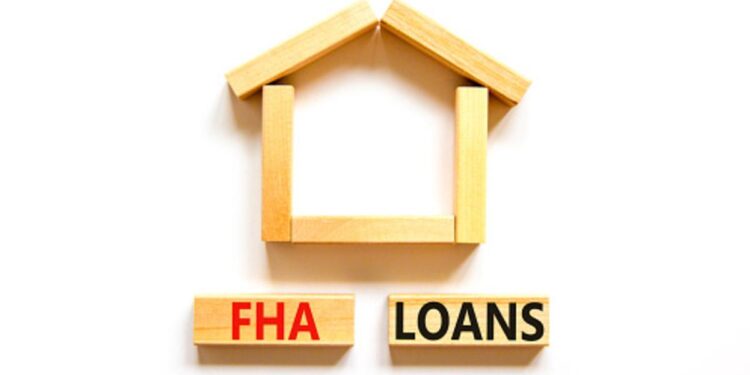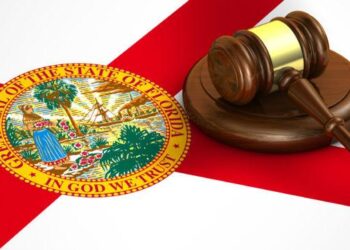The FHA loan is intended to assist low- to moderate-income families in purchasing a home. They’re especially popular among first-time purchasers. If you’re still not familiar with Federal Housing Administration (FHA) loans, let’s delve a little deeper and learn more about it.
Understanding the Federal Housing Administration (FHA) loan
As of 2022, if you have a credit score of at least 580, you can borrow up to 96.5 percent of a home’s value with an FHA loan. That implies only a 3.5 percent down payment is necessary.
You can still acquire an FHA loan if your credit score is between 500 and 579 as long as you have a 10% down payment.
The down payment on an FHA loan can come from savings, a financial gift from a family member, or a down payment assistance award.
The bank’s role in an FHA Loan
The Federal Housing Administration (FHA) does not really lend money to anyone for a mortgage. The loan is provided by an FHA-approved bank or other financial institution.
The loan is insured by the FHA. Because the bank isn’t taking on the risk of default, it’s easier to secure bank approval. Because of this, it’s sometimes referred to as an FHA-insured loan.
Borrowers who qualify for an FHA loan must acquire mortgage insurance, with the FHA receiving the premium payments.
History of the FHA Loan
During the Great Depression, Congress established the FHA in 1934. The housing market was in danger at the time: default and foreclosure rates had surged, 50 percent down payments were prevalent, and mortgage terms were unattainable for average wage earners. As a result, the United States was predominantly a renter’s paradise, with only one out of every ten households owning a property.
The FHA was established by the government to decrease lender risk and make it easier for borrowers to qualify for home loans. According to information from the Federal Reserve Bank of St. Louis, the homeownership rate in the United States has consistently risen, hitting an all-time high of 69.2 percent in 2004. The rate was 65.4 percent in the third quarter of 2021.
FHA loans are available to everyone, including those who can afford conventional mortgages, despite the fact that they are primarily designed for lower-income borrowers.
Types of Federal Housing Administration (FHA) Loans
In addition to traditional mortgages, the FHA offers several other home loan types.
Home equity conversion mortgage (HECM)
This is a reverse mortgage scheme that allows seniors 62 and up to turn the equity in their houses into cash while keeping the title to the property. The funds can be withdrawn in a predetermined monthly amount, a line of credit, or a mix of both for the homeowner.
FHA 203(k) improvement loan
The cost of some repairs and renovations is factored into the loan amount. It’s ideal for people who are willing to invest in a fixer-upper and put in some sweat equity.
FHA energy efficient mortgage
This program is comparable to the FHA 203(k) home renovation loan program, but it focuses on energy-saving modifications like new insulation or solar or wind energy systems.
Section 245(a) Loan
Borrowers who expect their incomes to rise will benefit from this scheme. The Graduated Payment Mortgage (GPM) begins with lower monthly payments that climb gradually over time. The monthly principal payments on the Growing-Equity Mortgage (GEM) have been planned to increase. Both guarantee loan terms that are shorter.
FHA loan requirements
Your lender will assess your eligibility for an FHA loan in the same way that it would any other mortgage application, beginning with a check to ensure that you have a valid Social Security number, are legally present in the United States and are of legal age (according to your state laws).
In some areas, FHA loan conditions are less strict than bank loan criteria. There are, however, some standards that are more strict. When you apply for a mortgage, whether it’s an FHA-guaranteed loan or not, your financial history will be scrutinized.
Credit scores and down payments
Individuals with credit ratings as low as 500 are eligible for FHA loans. For a FICO score, this falls into the “extremely bad” category. If your credit score is between 500 and 579, you might be able to qualify for an FHA loan if you can afford a 10% down payment. Meanwhile, if your credit score is 580 or better, you may qualify for an FHA loan with as low as a 3.5 percent down payment.
In order to qualify for a conventional mortgage, applicants normally need a credit score of at least 620. Banks require a down payment that ranges from 3% to 20%, depending on how ready they are to lend money at the time you apply.
As a general rule, the lower your credit score and down payment, the higher the interest rate you’ll pay on your mortgage.
History of honoring debts
A lender will examine your work history over the previous two years, as well as your payment history for bills such as utilities and rent.
People who are delinquent on their federal student loan payments or their income tax payments will be turned down unless they agree to a reasonable repayment plan. A history of bankruptcy or foreclosure could also be an issue.
To qualify for an FHA loan—or any sort of mortgage—the borrower must have been out of bankruptcy or foreclosure for at least two or three years. Exceptions can be made if the borrower can show that they have worked hard to rebuild their credit and have their finances in line.
Proof of steady employment
Mortgages must be paid back, and an FHA-approved lender will seek proof that the applicant can do so. Evidence of recent and consistent employment is crucial in establishing whether or not the borrower will be able to keep their word.
Tax returns, as well as a current year-to-date balance sheet and profit-and-loss statement, can attest to this.
You may still qualify if you’ve been self-employed for less than two years but more than one year and have a good work and income history in the same or a related occupation for the two years prior to becoming self-employed.
Sufficient income
The total cost of your mortgage, HOA fees, property taxes, mortgage insurance, and homeowners insurance should not exceed 31% of your gross income. This is referred to as the front-end ratio by banks. Meanwhile, your back-end ratio should be less than 43% of your gross income, which includes your mortgage payment and all other monthly consumer obligations.
Source: U.S. Department of Housing and Urban Development
FHA mortgage insurance premiums (MIPs)
You must pay two types of mortgage insurance payments (MIPs) with an FHA loan: an upfront MIP and an annual MIP, which is paid monthly. The upfront MIP will be 1.75 percent of the base loan amount in 2022.
You have the option of paying the MIP in full at the time of closing or having it rolled into the loan. If you get a $350,000 house loan, for example, you’ll pay an upfront MIP of 1.75 percent x $350,000 = $6,125. These funds are deposited into an escrow account administered by the US Treasury Department. If you default on your loan, the proceeds will be used to pay down your mortgage.
Borrowers make annual MIP payments every month, ranging from 0.45 percent to 1.05 percent of the original loan amount, despite the term. The payment amounts vary based on the loan size, loan length, and the original loan-to-value (LTV) ratio. Assume you have a MIP of 0.85 percent per year. In such a situation, an annual MIP payment of 0.85 percent x $350,000 = $2,975 (or $247.92 monthly) would be required on a $350,000 loan. In addition to the one-time upfront MIP payment, these monthly premiums must be paid. Depending on the term of the loan and the LTV, you will make annual MIP payments for 11 years or the life of the loan.
You may be able to deduct the amount you pay in premiums on your taxes. To do so, you must itemize your deductions rather than take the standard deduction.
Source: U.S. Department of Housing and Urban Development
Homes that qualify for an FHA Loan
The amount you can borrow with an FHA loan is limited. Lower-cost places have a lower limit (known as the “floor”) than the typical FHA loan, whereas high-cost areas have a more significant amount (referred to as the “ceiling”).
There are “special exemption” places, such as Alaska, Hawaii, Guam, and the US Virgin Islands, where construction prices are incredibly high, and the limits are considerably higher.
The restriction is set at 115 percent of the county’s median home price, as assessed by the United States Department of Housing and Urban Development (HUD).
Federal Housing Administration (FHA) loan limits
The amount you can borrow with an FHA loan is limited. Lower-cost places have a lower limit (known as the “floor”) than the typical FHA loan, whereas high-cost areas have a larger amount (referred to as the “ceiling”).
There are “special exemption” places, such as Alaska, Hawaii, Guam, and the US Virgin Islands, where construction prices are extremely high and the limits are considerably higher.
The restriction is set at 115 percent of the county’s median home price, as assessed by the United States Department of Housing and Urban Development (HUD).
U.S. Department of Housing and Urban Development
Federal Housing Administration (FHA) loan relief
If you apply for an FHA loan and have a true financial hardship, such as a loss of income or an increase in living expenses, you may be eligible for loan relief. For example, the FHA Home Affordable Modification Program (HAMP) can permanently reduce your monthly mortgage payment to a manageable amount. To become a full member of the program, you must complete a trial payment plan in which you make three scheduled payments at a reduced amount on time.
Do FHA loans have prepayment penalties?
Prepayment penalties are not applicable to Federal Housing Administration (FHA) loans, unlike those offered by some traditional lenders.
FHA loans, which are government-backed mortgages, are intended for borrowers with low to moderate incomes. Many conventional loans need higher minimum down payments and credit scores. FHA loan rules state that borrowers cannot be charged any excess fees, such as a due-on-sale clause or a prepayment penalty, that could put them in financial trouble.
What is a prepayment penalty?
If the borrower significantly pays down or pays off the mortgage early, usually within the first three to five years of committing to the loan, a prepayment penalty is levied.
The penalty is calculated as a percentage of the remaining mortgage balance in some cases. It could also be a certain amount of interest for a set number of months. Prepayment penalties safeguard the lender from the financial loss of interest income that would have been paid otherwise. They also lower the risk of prepayment for fixed-income investors, such as mortgage-backed securities (MBS).
Mortgage interest calculation in case of prepayment
While you are not required to pay extra fees if you settle your FHA loan early, you are still responsible for the entire interest as of the following installment due date for any FHA loans closed before Jan. 21, 2015. Even if you paid off your mortgage in full, you are still liable for interest until the payment due date.
Assume that your FHA loan’s monthly payment due date is the fifth of every month. You are still responsible for the interest until the fifth of the month if you make your monthly payment by the first of the month.
Although the post-payment interest charge was not legally a prepayment penalty, many homeowners saw it as such. The FHA updated its regulations to abolish post-payment interest costs for FHA loans finalized on or after January 21, 2015, to ease the burden on homeowners. Lenders of qualified FHA loans must compute monthly interest using the actual unpaid mortgage balance as of the day the prepayment is received under these policies. FHA loan issuers are only allowed to charge interest until the loan is paid off.
Before prepaying an FHA loan, be sure you have enough cash on hand. It is generally a good idea to have enough money to cover expenses for a few months or even a year.
Indirect costs of prepayment
There are no direct fees associated with paying off FHA loans early, but there are indirect costs. Borrowers lose liquidity when they prepay FHA loans. Homeowners who put additional money into their FHA loans will have difficulty taking it out later if they need it. The best approach to pull cash out of a property is to use a home equity line of credit (HELOC). However, because the FHA does not offer home equity lines of credit, consumers will have to look for other options to qualify.
Prepaying an FHA loan has an opportunity cost as well. Homeowners lost out on money they could have made investing in other assets by paying down the debt.
Finally, prepaying an FHA loan appears to have the potential to result in the loss of the mortgage interest tax deduction. When people who take advantage of that tax break pay off their mortgages early, they lose the ability to deduct interest on their taxes. However, because of the Tax Cuts and Jobs Act (TCJA), many individuals no longer itemized deductions.
How do I apply for an FHA Loan?
The Federal Housing Administration, part of the Department of Housing and Urban Development, insures FHA loans (HUD).
FHA loans can help low to moderate-income purchasers accomplish their dreams of homeownership by providing modest down payments, lenient credit criteria, and inexpensive rates thanks to government insurance. Despite the fact that the FHA insures FHA mortgages, the organization does not lend money. An FHA loan is obtained from a private lender in the same way that a conventional loan is obtained. So the first step is to identify a lender with whom you wish to apply.
1. Find a lender
Finding an FHA-approved lender is the first step in securing an FHA home loan. The good news is that almost all banks and mortgage firms provide this form of loan, so locating one shouldn’t be a problem.
Banks, mortgage brokers, credit unions, and online lenders offer FHA financing. You can also start by looking at our list of the best FHA lenders.
A few factors will determine which lender is best for you. For example, if you have a lower credit score, make sure your lender accepts the FHA’s minimum credit score of 580. (some lenders set the bar at 600 or higher).
You should also consider how you’d like to collaborate with your lender. Do you prefer face-to-face communication? Find a local lender who specializes in both in-person and over-the-phone lending. On the other hand, if you choose to go it alone, several lenders will allow you to complete most or all of the mortgage procedures online.
2. Apply for an FHA loan
The next step is to fill out a loan application after you’ve found a lender. Many lenders allow you to apply online, though some may link you with a loan officer over the phone or email to complete your application.
You should contact many lenders to evaluate offers because mortgage terms and rates differ from one lender to the next. This aids you in locating the finest offer.
You should receive quotations from three to five lenders so you can be sure you’re getting the best interest rate and costs possible.
Lenders will generally assess your credit before providing rate information and offering a pre-approval. However, don’t be too concerned about the impact on your credit score.
If you submit all of your mortgage loan applications within a 45-day window, they’ll be listed on your credit report as a single credit inquiry, which means your credit score won’t be hit numerous times.
3. Provide basic details
Lenders will need basic personal information and property details to start your mortgage application.
When you initially apply for an FHA loan, be prepared to provide:
- Your full name
- Your Social Security Number
- A copy of your driver’s license or other state-approved ID
- Income information
- Employment history
- The property address
- Purchase price of the property
- Down payment amount
The lender will require supporting financial records to verify your income, savings, and debts after you’ve submitted these essential pieces of information. The list of supporting documents you’ll be requested for is listed below.
4. Compare Loan Estimates (LE)
Within three business days of receiving your loan application, the lender must present you with a Loan Estimate. All lenders employ the Loan Estimate (LE), which is a standard form. It aims to open the lending process by outlining a borrower’s expected interest rate, monthly mortgage payments, and closing expenses upfront.
The LE also includes loan type and duration information, ensuring that you’re evaluating mortgage offers on an equal level. (For example, an FHA loan with a 15-year term would have substantially higher payments than one with a 30-year term and the same loan amount.)
Make sure that all of your loan offers have the same loan type, length, and amount. Then compare interest rates, annual percentage rates (APR), and upfront fees to find the best deal.
What happens after you apply for an FHA loan?
With an FHA loan, the average period from application to closing is 30 to 45 days.
The underwriter will underwrite your loan file during this period. The underwriter examines your application and accompanying papers to ensure that you fulfill the FHA’s essential requirements for lending.









